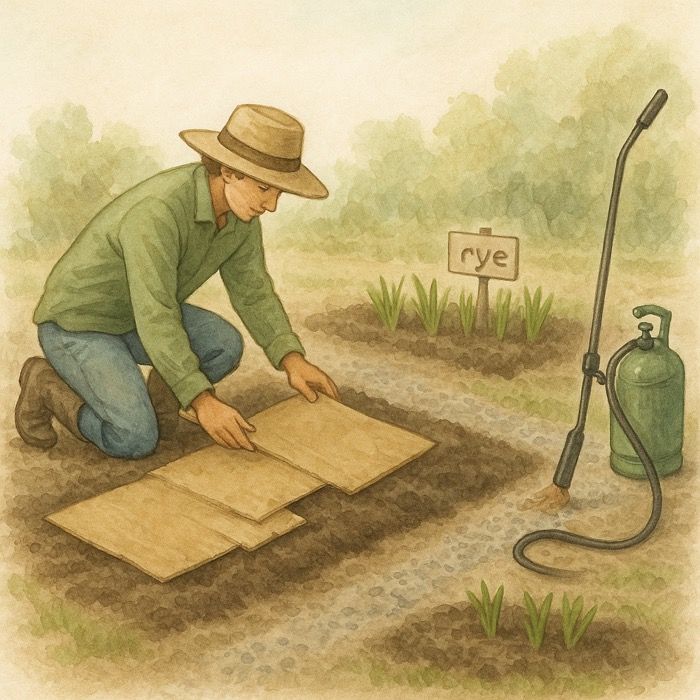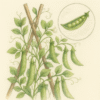The Power of Mounding: An Essential Gardening Technique for Healthy Plants
If you’re a gardening enthusiast looking for ways to boost your plant’s health and improve propagation, then it’s time to learn about mounding. This powerful gardening technique can transform your garden, making it lush and vibrant. In this blog post, we’ll explore what mounding is, its benefits, and how to effectively implement it in your garden. Let’s dive into the world of mounding and see how it can enhance your gardening experience.
What is Mounding?
Mounding is a gardening practice where soil is heaped around the base of a plant. This technique encourages the plant to develop additional roots along the buried stems, leading to stronger and healthier growth. It’s particularly useful for plants like lavender, potatoes, and tomatoes, which benefit from improved drainage and increased root development.
The Benefits of Mounding
- Enhanced Drainage – By raising the soil level around the plant, mounding improves drainage, preventing waterlogged conditions that can lead to root rot. This is especially beneficial for plants like lavender, which thrive in well-drained soil.
- Stronger Root System – Mounding encourages the growth of new roots along the buried stems. A more extensive root system means the plant can absorb more nutrients and water, resulting in healthier growth and better resistance to environmental stress.
- Effective Propagation – Mounding is an excellent method for propagating plants. As new roots develop along the buried stems, these offshoots can be separated and transplanted to grow new plants. This is a cost-effective way to expand your garden with minimal effort.
- Support Against Environmental Stress – The additional soil provides extra support to the plant, helping it withstand strong winds, heavy rains, and other environmental challenges. This is particularly useful for taller plants or those with weaker stems.
How to Implement Mounding in Your Garden
- Choose the Right Plants – Not all plants benefit from mounding. Focus on plants that can develop roots along their stems, such as lavender, potatoes, and tomatoes.
- Prepare the Soil – Ensure the soil is well-draining and rich in organic matter. You can amend the soil with compost or other organic materials to improve its quality.
- Build the Mound – Gently pile soil around the base of the plant. The mound should be high enough to cover the lower stems but not so high as to bury the plant excessively. Aim for a mound of about 6-8 inches.
- Maintain the Mound – Keep the soil moist but ensure it drains well. Over time, the soil may settle, so you may need to add more soil periodically to maintain the mound’s height.
- Monitor Plant Health – Regularly check the plant for signs of new root development and overall health. If propagating, wait until the new roots are well-established before separating the offshoots from the parent plant.
Master Gardener Tip: To maximize the benefits of mounding, try incorporating organic mulch into your soil mound. This not only improves soil structure and moisture retention but also adds essential nutrients that promote robust plant growth. For instance, when mounding around lavender, mix in a layer of compost or well-rotted manure. This will enhance drainage and provide a slow-release fertilizer effect, keeping your lavender healthy and thriving throughout the growing season. Additionally, regularly inspect the mound for signs of soil compaction or erosion, and replenish as needed to maintain its effectiveness.
Practical Example: Mounding Lavender
Lavender is a great example of a plant that benefits from mounding. Here’s a step-by-step guide to mounding lavender:
- Select a Healthy Lavender Plant – Choose an established plant with a good amount of stem growth.
- Prepare the Planting Area – Ensure the soil is well-draining and amend it with organic matter if needed.
- Build the Mound – Gently pile soil around the base of the lavender plant, covering the lower stems. Aim for a mound of about 6-8 inches.
- Water and Maintain – Keep the soil moist but ensure it drains well to prevent root rot. Add more soil if the mound settles too much.
- Propagate New Plants – As the lavender stems produce new roots, you can carefully separate the rooted offshoots from the parent plant and transplant them to new locations.
Conclusion
Mounding is a simple yet highly effective gardening technique that can significantly enhance your plant’s health and growth. By improving drainage, strengthening the root system, aiding in propagation, and providing extra support, mounding can transform your garden into a lush and thriving oasis. Whether you’re growing lavender, potatoes, or other suitable plants, incorporating mounding into your gardening routine can yield impressive results. Give it a try and watch your garden flourish!
For more gardening tips and techniques, follow us. Happy gardening!
Link to more info: Mounding in the Garden
More From Our Master Gardener
Recent Posts

❄️ Snow as Fertilizer – The Truth About “Poor Man’s Nitrogen”

5 Unexpected Winter Weed Control Strategies (That Don’t Involve Mulch)

Harnessing Winter Sun – Passive Solar Tricks for Your Garden

How to Grow Spinach – The Ultimate Beginner’s Guide for Tender, Nutritious Leaves

How to Grow Peas: The Ultimate Beginner’s Guide for Sweet, Crisp Harvests














